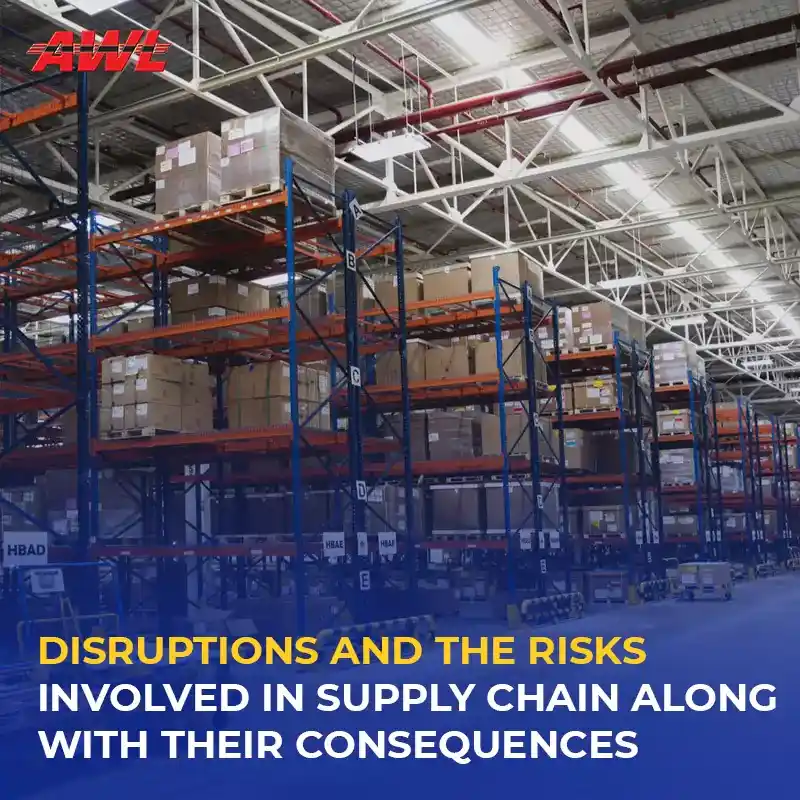

Without a supply chain a business would not have a product to sell to its customers, would have no inventory to stock and eventually would not be able to earn any revenue from its business model. Therefore, a supply chain is an integral part to carry out any business. However, having a supply chain also means that there would be disruptions in the supply chain management system that would impact the overall working of the business. Shortage of goods, inflation effects, production seizures, goods not being uploaded at the ports are common types of disruptions that can occur in a supply chain. However, having a proper supply chain risk management system can in turn help your business to implement the tried and tested strategies that are capable of eliminating the risk involved. It is essential to first understand the risks that are involved in the supply chain before either making your own risk management strategy or implementing the existing ones.
There might be internal or external risks that might be affecting your supply chain. However, having supply chain risk management enables your business to identify and mitigate the risks within the end to end supply chain. Also, it is important to understand the difference between the external and internal risks involved in the supply chain.
Internal risks are within your business and can be identified using supply chain risk management softwares, IoT capabilities and other techniques. Although these risks might be manageable as compared to the external risks but still should not be avoided as they can have serious impacts on the supply chain. Some of the internal risks are as follows:
Production Risks
There can be a production risk if any of your major or minor production source is affected which is affecting the whole manufacturing process and causing delay in production.
Business Risks
Any disruption in standard business procedure, management, or other business related processes is a business risk and can have a negative impact on the supply chain.
Planning and Analysis Risks
An inaccurate forecasting or an unsuccessfully planned production or management measure.
Contingency Risks
If you are not prepared or if you do not have a contingency plan for any unforeseen supply chain disruptions then this can cause a serious problem and would be a result of an internal risk in the supply chain.
Unlike internal risks, the global supply chain risks that occur from outside of your business are the external risks that are involved in the supply chain. While the internal risks are easy to predict, the external risks on the other hand, are harder to predict and therefore it is much more difficult to overcome these risks. Some of the external risks are as follows:
Demand Risks
When your demand prediction is different from the actual market demand, or in case of an unpredictable demand, your supply chain is most likely to take a hit.
Supply Risks
The supply risks on the other hand, occur when the required raw materials are not available to carry out the production accordingly, which disrupts the flow of the supply chain.
Environmental Risks
The impact of any new government policy, any political, economic, or environmental issues that can impact any part of the supply chain.
Business Risk
If there is an unexpected change in any one of your business entities that can potentially disrupt your supply chain.
The conditions that affect the supply chain change overtime however, the fundamentals of supply chain risk management do not change. Apart from the risks that are associated with the supply chain, it is important to also understand the fundamentals of supply chain in order to be able to prepare the best suitable supply chain risk management strategy for your business. The fundamentals of supply chain are as follows:
Irrespective of the size of the business, risk is constant. The decisions for making your suppliers, logistics or any other supply chain related decisions it is important to understand that these decisions will always have risks associated with them. In case of a new business, determining the supplier or finding the perfect logistics partner can be a risky decision. However, you would have to research about them and trust your instincts to make the right decision. However, the main part here is that there will be risk associated with every decision, big or small. Also, it is important to procure the appropriate supply chain team to reduce the risk involved and to make sure that all the decisions benefit the supply chain.
Increasing the reach of your business will expose you to more global risks. Just like the recent COVID 19 pandemic, which disrupted the supply chains all around the world. The global supply chains usually have a large number of touch points, and in some cases they might also involve supply partners from around the world. If there is an emergency in any country and if you have any suppliers or logistics partners present in that particular country, then it is most likely that your supply chain will also be affected. However, the global supply chain, on the other hand, enables you to produce goods at competitive prices and speeds that are demanded in the market. Moreover, it is important to understand the risks that are associated with global supply chains. Therefore, the decisions that are made to limit the risk exposure while simultaneously keeping the supply chain benefits is the best practice to take the most advantage of your supply chain.
Also Read: Supply Chain Management and Digital Innovation in the Wake of COVID-19
Risk is constant in all aspects of business and is constantly evolving at a rapid pace. It plays an integral part in every decision that is made in a business. Therefore, it is advisable to constantly monitor the risk involved to be able to manage it. In case of an emergency, the supply chain data can be used to determine the risk eliminating strategies. Moreover, with the evolving risk in the supply chain market, supply chain risk management is the only way that can enable you to carry out your operations successfully.
Generally, risk mitigation strategies are a fundamental part of any business strategy and are also necessary in the current scenario to be able to make your supply chain profitable. Having relevant and timely reports about the risks that can potentially disrupt your supply chain can also benefit you to mitigate that risk. Moreover, it is important to understand that every decision you make in business will involve some risk, and will have some potential impact on operations. Therefore, it is critical to have a strong risk management strategy that is able to support you in case of unforeseen events and ensures smooth supply chain operations.

